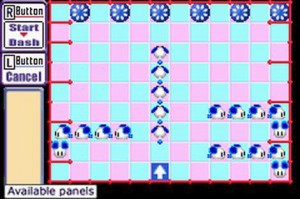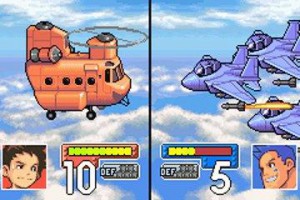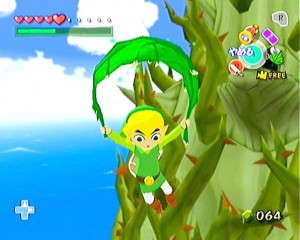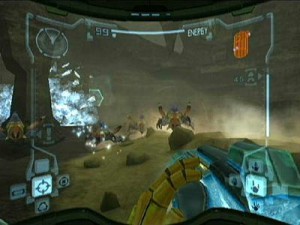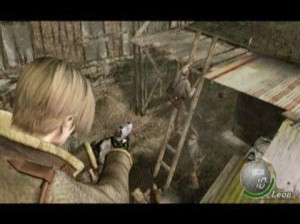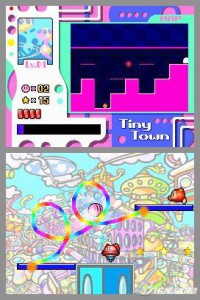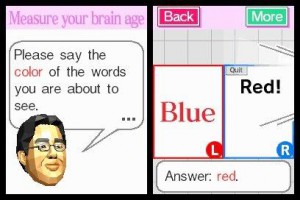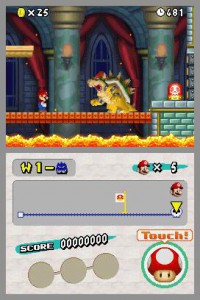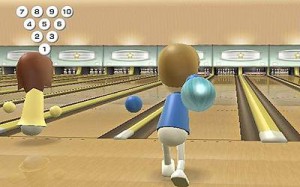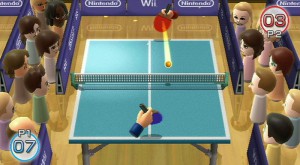The 10 most important Nintendo games of the last decade
The last decade saw a number of changes, not just for Nintendo, but for the gaming industry as a whole. As systems became more powerful we were introduced to new games, as well as new ways to play games. We were forced to say goodbye to some of our favorite developers and series, but we still discovered new ones, and even some old ones that had been forgotten over time. As time progressed from the year 2000 to 2009, gaming also progressed, changing from a fairly niche pastime to a culture that gained some degree of mainstream recognition. These are the 10 games for Nintendo systems that I feel best represent gaming over the last 10 years.
Chu Chu Rocket (Game Boy Advance – 2001)
Why it’s important: It showed Sega ducking out of the console market.
As well as being one of the better puzzle games on the Game Boy Advance, Chu Chu Rocket deserves the first place on this list because it was the first game Sega published for a Nintendo system, or any other system for that matter, after the Dreamcast had ceased production. So for me, Chu Chu Rocket represents one of the biggest contenders in the industry dropping out (at least of making consoles), replacing the big three of Nintendo, Sony and Sega with Nintendo, Sony and Microsoft. It’s also a decent translation of a Dreamcast game to a handheld system. It’s certainly better than the GBA version of Jet Grind Radio.
Advance Wars (Game Boy Advance – 2001)
Why it’s important: It wasn’t exclusive to Japan.
Some of the best games never make it out of Japan. Case in point: the Nintendo Wars series of games, several turn-based strategy games that had appeared on almost ever Nintendo console since the NES – at least in Japan. Then came Advance Wars, unsurprisingly for the Game Boy Advance but surprisingly released in the English-speaking world. Advance Wars is one of the best examples of Western audiences being introduced to a great franchise that previously hadn’t seen an English release. Then came Fire Emblem, Phoenix Wright and a host of other fantastic titles in series most of us didn’t know existed. This month’s release of Glory of Heracles shows that we’re still being introduced to new old franchises, and it was Advance Wars that really kicked off this trend.
The Legend of Zelda: The Wind Waker/Metroid Prime (GameCube – 2003/2002)
They’re important because: They showcased the often-unexpected ways that our favorite franchises evolved.
Originally this spot was just for Wind Waker, but I felt that both Zelda and Metroid deserved a place on this list. Both games were released within a few months of each other and took their respective franchises in strange, but ultimately successful directions. Wind Waker had many fans bemoaning its cutesy cel-shaded graphics when it was first revealed, but once it was released, it was clear that this Zelda still had the same gameplay that had made Ocarina of Time so well-loved as well as a distinct art style. Metroid Prime ditched exploring planets in 2D for a first person view, a change that proved to be immersive as it was inventive. Though not all franchises managed to get through the last console generation unscarred (see: Sonic the Hedgehog), Zelda and Metroid proved that even some of the oldest games still had a few new tricks up their sleeves.
Resident Evil 4 (GameCube – 2005)
Why it’s important: It revolutionized survival horror and popularized over-the-shoulder shooting
The last decade saw a lot of previously popular series and genres of games start to die off and become irrelevant. There were plenty of titles that were great back in the 90s, but needed to lift their game to compete in the 21st century. Resident Evil, as well as the survival horror genre in general, suffered from clunky controls and archaic game mechanics. Thankfully, Capcom fixed these issues in Resident Evil 4, a game that moved at a much quicker pace yet still kept the creepy chills fans had come to expect from the series. Part of this was due to the over-the-shoulder viewpoint used for aiming which let the player be more immersed in the action on screen as well as make targeting enemy Ganados incredibly easy. So not only did Resident Evil 4 revive the stale survival horror genre, but it also inspired plenty of other games to adopt the over-the-shoulder view such as Dead Space and Gears of War.
Kirby: Canvas Curse/Kirby: Power Paintbrush (Nintendo DS – 2005)
Why it’s important: It took games beyond button-pressing and showed what could be done if a game was based entirely around touch screen controls.
The first year of Nintendo DS releases wasn’t exactly phenomenal. Super Mario 64 DS and WarioWare: Touched were great, but Mario’s weird thumb controlled joystick substituted and Wario’s simplistic minigames didn’t exactly show off what Nintendo’s new handheld could do. Enter Kirby: Canvas Curse, a game that used nothing but using the Nintendo DS’s touch screen. Controlling Kirby by drawing a path on the lower screen worked surprisingly well, and paved the way for other touch controlled games like The Legend of Zelda: Phantom Hourglass and Elite Beat Agents. Last decade had a strange obsession with touch screens, with the Nintendo DS and iPhone both being extremely successful. Kirby: Canvas Curse was the first example of gaming with a touch screen turning out great and ending up with a title that couldn’t have been made on any other console.
Brain Age: Train Your Brain in Minutes a Day!/Dr. Kawashima’s Brain Training: How Old Is Your Brain? (Nintendo DS – 2006)
Why it’s important: It signaled Nintendo’s shift to more “casual” titles that everyone could play.
Despite how much it ended up selling, making Brain Training was actually a massive risk. Stores in Japan were reluctant to stock it, as they were wary about how much it would sell. Brain Training certainly wasn’t the first game to focus on self-improvement, but it was one of the most successful. Dr. Kawashima’s disembodied head became the face of Nintendo’s Touch Generations games, with Nintendo following it up with titles based around teaching maths, fitness and even cooking. Without Brain Training, there probably wouldn’t be a Wii Fit, Personal Trainer: Walking or a Daisy Fuenes Pilates video game. Gee, thanks Brain Training.
New Super Mario Bros. (Nintendo DS – 2006)
Why it’s important – It brought back retro styled gameplay, inspiring other franchises to return to their roots.
New Super Mario Bros. was decidedly “retro” in its design, but it also sported fancy graphics, high quality music and a big chunk of new content. Sure, we seem to get a new Mario game every few months, but NSMB was a throwback to the 2D platforming action of Super Mario Bros. 3 which Mario hadn’t really done since Super Mario World was released in the early 90’s. Since New Super Mario Bros. was released it seems to have started a trend of game developers looking through their old titles and producing sequels to games that haven’t been seen for some time. Sometimes they sport old-school graphics and game design like Mega Man 9 and Contra 4 or sometimes they’re completely redone to the standards of other current-generation games like Punch-Out!! and Bionic Commando. Sure, Mario might not have been the trendsetter, but he did pull off retro-inspired gameplay more successfully than other series and give us gamers a nice sense of nostalgia.
Wii Sports (Wii – 2006)
Why it’s important: It invented waggle and made bowling slightly cool.
Sure, the Wii wasn’t the first instance of motion controls in games. We couldn’t forget about the EyeToy or the Power Glove (no matter how hard we try), but Wii Sports was the game that launched the Wii, the title that popularized gaming amongst those who had previously shunned it. Wii Sports showed the limitless possibilities that could be explored with a white piece of plastic. Granted, five fairly shallow representations of various sports aren’t exactly limited possibilities, but it was a nice tech demo and still the console’s flagship title. With Sony and Microsoft recently revealing their own motion sensing devices, it’s clear that the Wii’s success will impact the gaming industry in future for better or worse. Thank Wii Sports for it; for luring in your grandparents with the promise of bowling.
Wii Play (Wii – 2007)
Why it’s important – It’s the best selling console game of all time.
Love it or hate it, Wii Play just sold over 25 million copies worldwide. Of course, if it wasn’t bundled with a Wii Remote it wouldn’t have sold half as well. So, do the overwhelming sales of Wii Play mean that consumers are getting dumber? Nah, if anything they’re getting smarter. I got my Wii Remote cheaper bundled with Wii Play than it would have been separately. If Nintendo can push 25 million copies of a $5 game simply by bundling it with a controller, consider them marketing geniuses. Hopefully this means that the English release of Monster Hunter Tri sells millions of copies.
So those are my Top 10 Most Important Nintendo Games of the Decade. Agree? Disagree? Leave a comment then.
